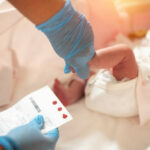Congenital heart defects (CHDs) are structural abnormalities in the heart that develop before birth, affecting blood flow and heart function. They are the most common birth defects worldwide, occurring in approximately 1 in every 100 live births.
📌 Fact: CHDs affect nearly 1% of all newborns, making them the most frequently diagnosed congenital disorder.

🩺 What Are Congenital Heart Defects (CHDs)?
CHDs occur when the heart does not form properly during fetal development, leading to problems with blood circulation, oxygen delivery, or heart function. The severity of CHDs can range from mild (requiring little to no intervention) to critical (life-threatening and needing immediate surgery).
🔹 Types of CHDs
✅ Mild CHDs: May not require surgery or may resolve on their own.
✔ Atrial Septal Defect (ASD) – A hole between the upper heart chambers.
✔ Ventricular Septal Defect (VSD) – A hole between the lower heart chambers.
✔ Patent Ductus Arteriosus (PDA) – A persistent fetal blood vessel that should close after birth.
❌ Severe (Critical) CHDs: Require surgery or intervention soon after birth.
🚨 Tetralogy of Fallot (TOF) – A combination of four heart defects that cause oxygen-poor blood to flow to the body.
🚨 Transposition of the Great Arteries (TGA) – The two major arteries leaving the heart are switched.
🚨 Hypoplastic Left Heart Syndrome (HLHS) – The left side of the heart is underdeveloped.
📌 Fact: About 25% of babies born with CHDs have a critical condition requiring surgery or intervention in the first year of life.
🛑 How Common Are CHDs?
🔹 CHDs occur in about 1 in 100 live births.
🔹 About 1 in 4 babies with CHDs has a critical defect requiring immediate medical care.
🔹 CHDs are responsible for nearly 30% of all infant deaths caused by birth defects.
📌 Fact: Advances in medical care have significantly improved survival rates for babies with CHDs. Today, nearly 85% of children with CHDs survive into adulthood.
📌 Final Thoughts
Congenital heart defects (CHDs) are the most common birth defects worldwide, affecting millions of babies each year. Early detection, improved surgical techniques, and advanced medical care have greatly increased survival rates and quality of life for affected children.







